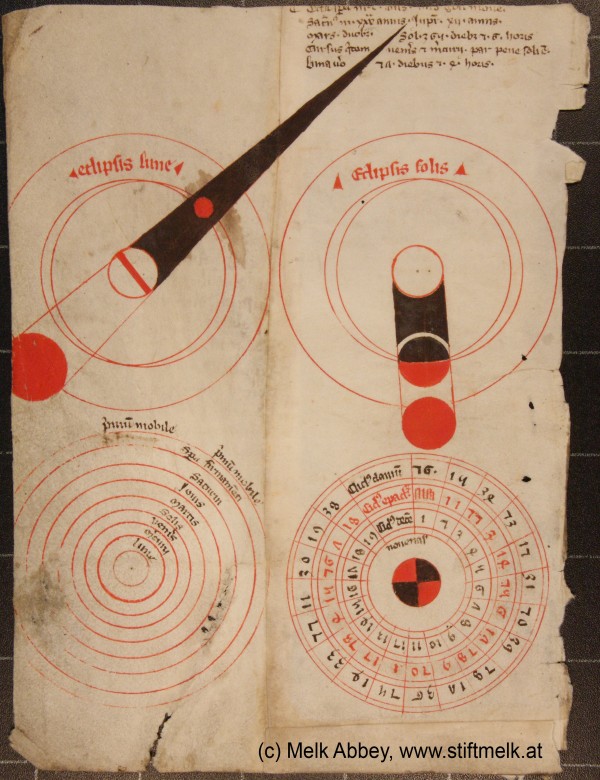2024年3月30日
Medieval Astronomy from Melk Abbey
Image Credit: Paul Beck (Univ. Vienna), Georg Zotti (Vienna Inst. Arch. Science)
Copyright: Library of Melk Abbey, Frag. 229
Explanation: Discovered by accident, this manuscript page provides graphical insight to astronomy in medieval times, before the Renaissance and the influence of Nicolaus Copernicus, Tycho de Brahe, Johannes Kepler, and Galileo. The intriguing page is from lecture notes on astronomy compiled by the monk Magister Wolfgang de Styria before the year 1490. The top panels clearly illustrate the necessary geometry for a lunar (left) and solar eclipse in the Earth-centered Ptolemaic system. At lower left is a diagram of the Ptolemaic view of the Solar System with text at the upper right to explain the movement of the planets according to Ptolemy’s geocentric model. At the lower right is a chart to calculate the date of Easter Sunday in the Julian calendar. The illustrated manuscript page was found at historic Melk Abbey in Austria.
Tomorrow’s picture: eclipse below
梅尔克修道院珍藏的天文手稿
影像提供: Paul Beck (Univ. Vienna), Georg Zotti (Vienna Inst. Arch. Science)
版权: Library of Melk Abbey, Frag. 229
说明: 这张无意中发现的手稿,见证了在文艺复兴之前,还没受到尼古拉·哥白尼、第谷·布拉厄、约翰内斯·开普勒、及伽利略影响的中世纪天文学家之思维。这张撰写于1490年之前的手稿,是沃尔夫冈修士(Magister Wolfgang de Styria)在奥地利的梅尔克修道院所编写的天文演讲笔记。笔记页顶端描绘在托勒密地心系统里,造成月食(上左)和日食的必要几何条件。左下图是托勒密系统对太阳系行星如何运行的图示并在右上角加注了诠释,而右下方的图表则是在儒略历中如何推算复活节的日期。这张图文并茂的手稿,发现于奥地利富有历史的梅尔克修道院。
明日的图片: eclipse below








One Comment